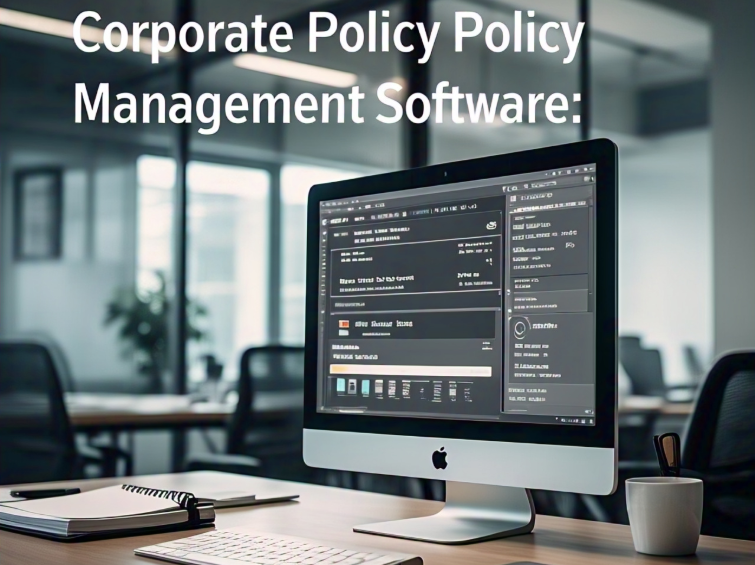Organizations today face constant pressure to uphold stringent data protection regulations, maintain network security, and align with compliance mandates. With cyber-threats growing more sophisticated, the ability to govern and manage policies effectively can make or break an enterprise’s security posture. IT policy management software serves as a vital cornerstone, offering centralized control over policies, automated workflows, and real-time reporting. This article examines the evolving role of such solutions, their critical features, and best practices to ensure effective implementation in a modern, risk-laden environment.
1. Evolving Role of IT Policy Management Software
Traditionally, IT policies were maintained in spreadsheets or static documents, making version control and stakeholder alignment nearly impossible at scale. As businesses adopt hybrid or fully remote work models and expand their digital footprints, the complexity of managing data-related risks increases. According to the 2023 Gartner Security & Risk Survey, 72% of organizations reported difficulty tracking policy revisions and changes in dynamic technology environments.
IT policy management software automates these processes, offering:
- Centralized Policy Repository: Eliminates scattered document storage by providing a single point of reference.
- Automated Updates & Reviews: Enables scheduled policy reviews, notifications, and version control to maintain up-to-date documentation.
- Built-In Compliance Monitoring: Aligns internal policies with industry frameworks such as ISO 27001, SOC 2, HIPAA, GDPR, PCI DSS, and more.
This evolution transforms manual paperwork into a well-orchestrated system that helps teams navigate regulatory demands and mitigate risk effectively.
2. Key Features & Functionalities
A robust IT policy management software solution should encompass features that go beyond just storing documents. The following components typically differentiate best-in-class platforms:
- Role-Based Access Control (RBAC)
Ensures that only authorized stakeholders can view, edit, or approve policies. RBAC reduces accidental modifications and enforces a clear chain of authority. - Version Control & Audit Trails
Tracks all edits and updates, enabling quick reference to previous policy versions. A fully documented audit trail helps with regulatory inquiries and forensics if an incident occurs. - Policy Acknowledgment Tracking
Automates the process of gathering employee signatures (digital or otherwise) and verifying who has read and understood each policy. This helps organizations demonstrate compliance and accountability. - Integrated Reporting & Dashboards
Provides visual summaries of policy statuses, upcoming review dates, and compliance gaps. Real-time dashboards empower leadership to make data-driven decisions on risk mitigation and resource allocation. - Workflow Customization & Automation
Speeds up policy creation, review, approval, and distribution through rule-based workflows. Automated reminders prevent lapses in critical policy updates.
3. Regulatory Compliance & Governance
Data privacy and IT security regulations evolve rapidly, often requiring organizations to keep pace with multiple overlapping mandates. IT policy management software supports governance by:
- Mapping Policies to Standards: Linking policy sections directly to relevant controls in frameworks like NIST Cybersecurity Framework, COBIT 2019, and ISO 27001. This mapping makes audits faster and more transparent.
- Simplifying Compliance Audits: Comprehensive dashboards and automated evidence collection enable streamlined communication with auditors, reducing the time and effort required.
- Minimizing Liability & Penalties: Evidence of robust policy management can reduce or eliminate sanctions during regulatory investigations.
4. Best Practices for Implementation
- Conduct a Thorough Needs Assessment
Identify existing gaps by analyzing current processes, compliance obligations, and stakeholder expectations. This step ensures that the software aligns with unique organizational objectives. - Establish a Governance Team
Include representatives from information security, IT operations, legal, compliance, and HR. A cross-functional governance structure promotes consistent policy enforcement and accountability. - Define Clear Ownership & Responsibilities
Assign policy owners, reviewers, and approvers to specific roles. Clarify who makes decisions on policy revisions, which department handles enforcement, and how frequently reviews occur. - Train Users & Communicate Changes
Provide concise training modules on how to use the new system, the importance of policy compliance, and any updates to policies themselves. Clear communication fosters greater user adoption. - Adopt Continuous Improvement
After the initial rollout, collect feedback from end-users, auditors, and management. Implement incremental improvements in both policy content and software workflows for ongoing optimization.
5. ROI and Business Value
Investing in IT policy management software pays dividends by reducing manual overhead, improving accountability, and enhancing the organization’s risk management capabilities. Key benefits include:
- Operational Efficiency: Automated workflows liberate employees from repetitive tasks, saving time and resources.
- Reduced Exposure to Non-Compliance: Proactively addressing policy gaps helps prevent fines, reputational damage, and legal complications.
- Enhanced Risk Insights: Advanced reporting uncovers hidden vulnerabilities, enabling strategic allocation of resources to prevent major incidents.
- Improved Organizational Alignment: Centralized visibility of policies fosters a security-conscious culture across the enterprise.
6. Future Trends in IT Policy Management
- AI & Machine Learning
Tools are increasingly integrating AI to suggest policy updates or flag potential compliance risks, enabling proactive issue resolution. - Integration with GRC Platforms
Many organizations seek a single pane of glass for governance, risk, and compliance. As a result, IT policy management software often integrates with broader GRC solutions to deliver end-to-end oversight. - Real-Time Compliance Monitoring
The shift toward continuous auditing means modern tools incorporate real-time checks against relevant standards, minimizing time between an issue’s emergence and its detection. - Cloud-Based Deployments
To accommodate global workforces and fast-changing infrastructures, more platforms are being offered as Software-as-a-Service (SaaS). This drives scalability and faster adoption.
7. Conclusion
The rising complexity of IT ecosystems and tightening regulatory frameworks underscore the essential need for IT policy management software. By consolidating policy development, distribution, tracking, and audit readiness into a single platform, organizations significantly enhance their security posture and reduce the likelihood of costly compliance failures. Implementing such software, guided by best practices and ongoing improvements, offers measurable value—from operational efficiency to fortified governance across the entire enterprise.
Investing in a capable IT policy management software solution is no longer an option for growth-oriented businesses but a strategic necessity. When executed correctly, it forms a pivotal layer of defense against reputational, legal, and financial risks that stem from inadequate policy oversight.
